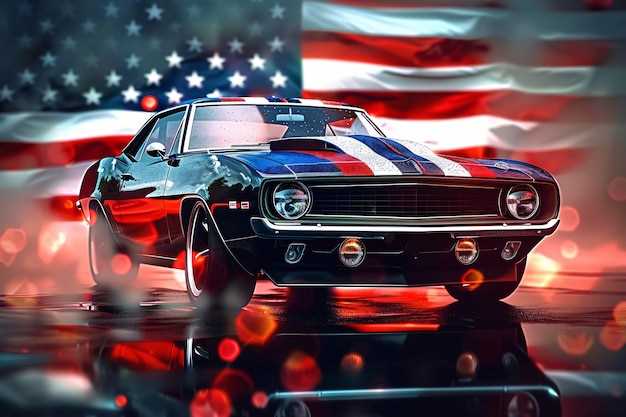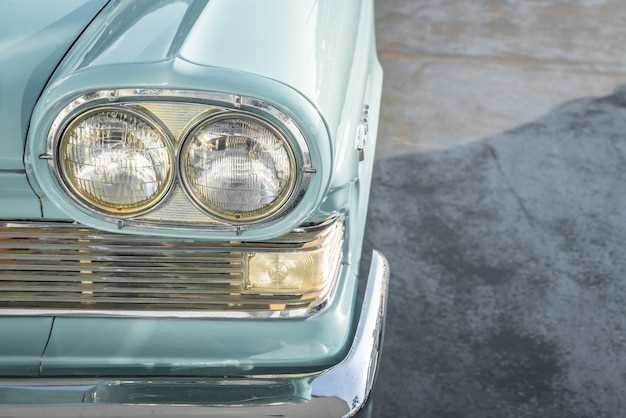

The 1960s and 1970s marked a golden era for the automotive industry, characterized by the rise of vintage American muscle cars. This period saw the convergence of innovative engineering, robust designs, and an insatiable demand for speed, leading to the birth of iconic models that still capture the imagination of car enthusiasts and collectors today.
During this transformative time, manufacturers like Ford, Chevrolet, and Plymouth unleashed a wave of powerful vehicles that combined high-performance engines with sleek aesthetics. The thrill of driving a muscle car became synonymous with freedom and rebellion, reflecting the cultural and social dynamics of the era. Models such as the Ford Mustang, Chevrolet Camaro, and Dodge Charger not only defined a generation but also set the standard for performance and style that continues to resonate.
These classic muscle cars were more than mere transportation; they represented a lifestyle fueled by passion and adventure. The distinct rumble of their V8 engines and the aggressive styling made them symbols of American automotive prowess. As we delve into the legacy of these remarkable machines, we celebrate their engineering feats and the cultural impact they left behind, proving that the allure of vintage muscle cars is as strong today as it was decades ago.
Top 5 Iconic Muscle Cars: Features and Specifications

Muscle cars of the 60s and 70s represent a golden era in American automotive history, characterized by powerful engines and aggressive styling. Here, we highlight five of the most iconic rides from this vintage period.
1. Ford Mustang (1964.5)
The Ford Mustang launched the pony car craze. With its sleek design, it featured a range of engines from a 170 cubic inch straight-six to a high-performance 289 cubic inch V8. The Mustang became a symbol of freedom and youthful rebellion, offering both performance and stylish customization options.
2. Chevrolet Camaro (1967)
The introduction of the Chevrolet Camaro provided a direct competitor to the Mustang. The first-generation Camaro was available with several engine options, including the powerful 396 cubic inch big-block V8. Its aggressive stance and performance capabilities made it a favorite among enthusiasts, solidifying its place in muscle car history.
3. Dodge Charger (1966)
The Dodge Charger became known for its bold design and formidable performance. The 426 Hemi engine option turned it into a true powerhouse, delivering impressive horsepower and torque. Its iconic fastback silhouette and presence in popular culture made it one of the most recognized muscle cars of the era.
4. Pontiac GTO (1964)
Often credited with starting the muscle car movement, the Pontiac GTO featured a robust 389 cubic inch V8 engine. Its combination of performance, style, and affordability created a unique appeal. The GTO’s racing heritage and strong presence on the streets helped it become a legendary ride.
5. Chrysler 300 Hurst (1970)
The Chrysler 300 Hurst was a limited-production muscle car known for its powerful 440 cubic inch V8 engine. Combining luxury features with performance, it stood out with exclusive styling and distinctive Hurst components. This fusion of elegance and power makes it a unique entry in the muscle car family.
These vintage muscle cars not only defined an era but also influenced generations of automotive design, performance, and culture, leaving an indelible mark on the American landscape.
Restoration Tips for Vintage Rides: Keeping the Classic Spirit Alive
Restoring vintage muscle cars from the 60s and 70s requires a blend of passion, patience, and expertise. To maintain the authentic essence of these rides, it is essential to prioritize originality while enhancing functionality.
Begin with a thorough assessment of the vehicle’s condition. Document every detail, including rust, paint quality, and mechanical issues. This will guide your restoration process and help you plan your budget effectively.
When sourcing parts, consider the importance of original components. Authentic pieces not only retain the car’s value but also preserve its historical significance. Joining dedicated clubs and online forums can assist in finding rare parts and advice from fellow enthusiasts.
Focus on the mechanical aspects to ensure that your ride runs smoothly. This includes the engine, transmission, and suspension systems. Restoring these components to factory specifications will enhance performance while keeping with the classic spirit.
The bodywork deserves special attention. Pay careful consideration to body panels, ensuring that repairs maintain the original design and shape. A proper paint job should reflect the car’s original color scheme, thus highlighting its heritage.
Don’t neglect the interior, as it significantly influences the overall experience of owning a muscle car. Original upholstery materials and styles will contribute to an authentic feel inside the vehicle. Restoring the dashboard, seats, and other components can bring the cabin back to its original glory.
Lastly, documenting your restoration journey not only serves as a personal keepsake but also benefits future owners. Keep records of modifications, repairs, and parts used, which can enhance your car’s provenance and resale value.
By following these tips, you can ensure that your vintage muscle car remains a testament to the classic automotive spirit, celebrated by enthusiasts for generations to come.
Buying Guide: What to Look for in Classic Muscle Cars

When diving into the world of classic muscle cars from the 60s and 70s, buyers should prioritize specific factors to ensure they choose the right vintage ride. Here are some essential elements to consider:
First and foremost, examine the car’s condition. Look for signs of rust, which can indicate deeper structural issues. Pay close attention to the chassis, floor pans, and wheel wells. A solid body is crucial for the car’s longevity and safety. Additionally, confirm that the car retains its original components, as this authenticity can significantly affect its value.
The engine is the heart of any muscle car. Inspect the engine type and displacement, as well as the horsepower rating. Many classic muscle cars are equipped with powerful V8 engines that define their performance. Check for signs of oil leaks and listen for any abnormal noises when running. A well-maintained engine suggests a car that has been cared for throughout the years.
Don’t forget to investigate the transmission. Classic muscle cars typically feature automatic or manual transmissions. Ensure the transmission shifts smoothly without hesitation. If you’re not familiar with the mechanics, consider having a trusted mechanic perform a thorough inspection before making a purchase.
Next, look into the car’s history. A well-documented history that includes registrations, maintenance records, and restoration details can enhance the appeal of a vintage muscle car. Investigating past ownership can also provide insight into how the car was treated over the years.
Lastly, consider the market value of the specific model you are interested in. Prices for classic muscle cars can vary widely based on rarity, condition, and demand. Researching recent sales and current listings will give you a clearer understanding of fair pricing and help you avoid overpaying.
In conclusion, buying a classic muscle car is not just a purchase but an investment in automotive history and culture. By focusing on the overall condition, engine performance, transmission functionality, documentation, and market value, you can make an informed decision and enjoy your vintage rides for years to come.






